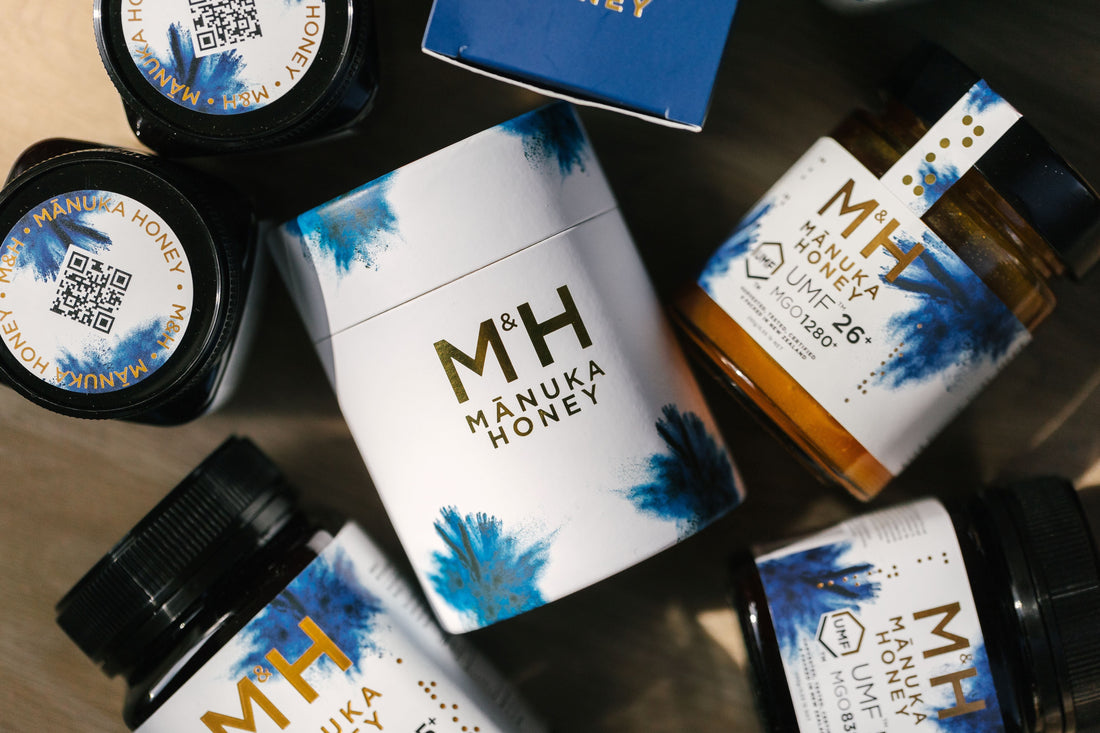
Welcome to M&H Mãnuka Honey, NZ
Hi. We’re glad you found us! There’s a jungle of honeys out there and it can be a challenge to find what you’re looking for. Fear not, we’re here to help. Let’s start with a brief explanation of what Manuka honey is.
New Zealand Manuka honey is produced by honeybees collecting nectar from the manuka tree (leptospermum scoparium). The manuka tree only flowers for a few weeks every year, and has had great traditional medicinal value throughout NZ history. The honey produced from manuka trees contains unique compounds with heavily researched antibacterial and anti-inflammatory characteristics. MGO is one such organic compound with strong antibacterial properties. (For the chemists out there - CH3C(O)CHO ).
Genuine Manuka honey should have an MGO rating on the label, often followed by a + symbol. This number is an indicator of minimum milligrams of methyglyoxal per kilo of honey. M&H Mãnuka Honey MGO 50+, for example, is a minimum of 50mg/kg of MGO.
Now to introduce UMF; We use the UMF grading system for authenticity in our Manuka honey. So, you’ll see numbers and ‘+’ symbols, but not just for the MGO. The UMF grading system uses multiple markers to ensure authenticity in the honey, and the product must be packed in New Zealand to use the mark. You can find more information about them at the Unique Manuka Factor Honey Association.
In short, each grade of UMF has a minimum MGO quantity. The lowest possible UMF grade is 5+, which contains a minimum of 83MGO, as well as minimum quantities of other markers for freshness, shelf-life and purity. Our range extends right up to a UMF26+, which is quite a rare honey at 1280+MGO. Overall, UMF is the second fastest way to determine if your manuka honey is a genuine, pure, New Zealand-made product. The fastest way is to look for our blue splash and the gold M&H!
Read more about the M&H Manuka Honey story.
Ready to try premium Manuka honey? Browse the M&H Manuka Honey New Zealand online store and elevate your wellness with this natural health and healing powerhouse. Shop from our huge range of different Manuka Honeys in singles, bundles, lozenges, and gift ideas (all products are UMF-certified and high in MGO potency).
